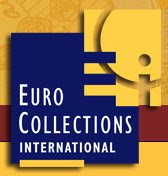September 7, 2010: The Perth Mint has released their September treasure trove of numismatic goodies to an eager collector community. Issued today are a selection of stunning new release silver coins continuing popular series', a sure-to-be highly sought after proof collection and the hotly anticipated 2011 bullion coins in gold and silver.

Tuvalu 2010 Great Warriors Knight 1oz Silver ProofFirst cab of the rank is the latest Perth Mint struck issue in the impressive "Great Warriors" silver coin series. Released as a four coin series throughout the year, the "Knight" coin is the 3rd in the series and features a strong image of a Middle Ages Knight decked out in full gear and weaponry. A well-crafted and eye-catching piece that follows the high proof standards of the previous two issues, the
Legionary and
Viking silver coins. Each coin is struck from 31.10 grams (1 ounce) of 99.9% fine silver on a 40.60mm flan - and is presented in an official Perth Mint jewel case with series-themed outer box, accompanied by a numbered Certificate of Authenticity confirming the tiny worldwide mintage of just 5000 coins!

Tuvalu 2010 $1 Great Composers Gustav Mahler 1oz Silver ProofAlso released this month as part of a popular series is the Gustav Mahler silver proof. This coin will be music to the ears of those already enjoying the stylish "Great Composers" precious metal program, with the Perth Mint issuing this 4th coin in the series. Released to mark the 150th anniversary of the death of Mahler, the creator of a number of brilliant compositions, the design of this coin follows that of the previous
Felix Mendelssohn,
Robert Schumann and
Frederic Chopin issues, with a detailed portraiture set against of backdrop of each composer's respective works. Sure to mirror the popularity of it's predecessors, the Gustav Mahler coin is struck from 31.10 grams (1 ounce) of 99.9% fine silver on a 40.60mm flan - and is presented in an official Perth Mint jewel case and outer box, accompanied by a numbered Certificate of Authenticity. A stunning tribute to a renowned composer.
Sure to get tongues wagging from coin collector and war aficionado alike, the Perth Mint have released this stunning 5-coin set of silver proof issues dedicated to tanks of World War II.

Tuvalu 2010 $1 Tanks of WWII 1oz Silver Proof CollectionIntroduced in rudimentary form in World War I, and famously dismissed as having ‘very limited military value’ by Britain’s Lord Kitchener, the role of the tank was crucial to the course of World War II. Hitler’s blitzkrieg of Western Europe at the start of the war awakened the world to the awesome potential of this menacing metallic monolith, and, considered essential for tactical and strategic success, the tank was utilised by many nations during WWII. This collection of silver coins, struck to the highest proof quality by the Perth Mint, is dedicated to the 'Big Guns' of World War II and features the USA's M4 Sherman, Germany's PzKpfw Vi Tiger 1, Russia's T-34, Britain's A22 Churchill and Japan's Type 97 Chi-Ha. Each coin has it's respective tank superbly struck in 99.9% silver on a 40.60mm flan, with a backdrop enhancing the country's symbolic emblem in striking colour.
| The entire set of 5 coins is presented in an imaginative, iron-grey presentation case within an army-green camoflag outer box, accompanied by a numbered Certificate of Authenticity confirming the worldwide mintage of a poultry 1500 sets! |  |
Lastly, and certainly not least, the Perth Mint has issued their bullion coinage for 2011! Very exciting for investment collectors and those intrigued by the popular Kookaburra, Kangaroo and Koala series', as well as the Lunar Year precious metal issues. As prices are determined by the daily silver rate we recommend giving ECI a call on our toll-free number (1-877-897-7696) to get the price for the day. Available right now are:
2011 $30 Kookaburra Kilo Silver Specimen
2011 $10 Kookaburra 10oz Silver Specimen
2011 $1 Kookaburra 1oz Silver Specimen
2011 $100 Kangaroo 1oz Gold Specimen
2011 $50 Kangaroo 1/2oz Gold Specimen
2011 $25 Kangaroo 1/4oz Gold Specimen
2011 $15 Kangaroo 1/10oz Gold Specimen
2011 $2 Lunar Rabbit 2oz Silver Specimen
2011 $1 Lunar Rabbit 1oz Silver Specimen
2011 50c Lunar Rabbit 1/2oz Silver Specimen
2011 $100 Lunar Rabbit 1oz Silver Specimen
2011 $25 Lunar Rabbit 1/4oz Gold Specimen
2011 $15 Lunar Rabbit 1/10oz Gold Specimen
The Lunar Rabbit silver coins are also available in high quality proof condition and will be available on the Euro Collections website in a couple of weeks when stocks arrive. Keep an eye out on our newsletter,
Twitter or
Facebook for announcements of these new releases.
























































